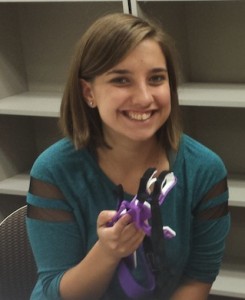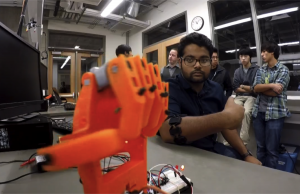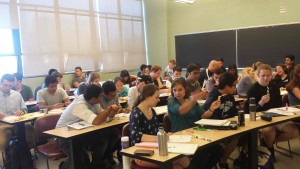 Sasha Portnova has been named one of ten 2015 Levinson Emerging Scholar’s! This is a highly competitive program supporting talented and highly motivated undergraduates who want to pursue creative and advanced bioscience and related research. As a Levinson Emerging Scholar, she will receive funding to support her research, including funding to present their findings at a professional conference. The award will support Sasha’s on-going research to improve the design of affordable, 3D-printed orthoses for individuals with spinal cord injury and other neurologic disorders. She will also be presenting this work at the American Academy of Orthotists & Prosthetists in Orlando, March 9-11, 2016.
Sasha Portnova has been named one of ten 2015 Levinson Emerging Scholar’s! This is a highly competitive program supporting talented and highly motivated undergraduates who want to pursue creative and advanced bioscience and related research. As a Levinson Emerging Scholar, she will receive funding to support her research, including funding to present their findings at a professional conference. The award will support Sasha’s on-going research to improve the design of affordable, 3D-printed orthoses for individuals with spinal cord injury and other neurologic disorders. She will also be presenting this work at the American Academy of Orthotists & Prosthetists in Orlando, March 9-11, 2016.
Congratulations Sasha!

 ongratulations to one of our collaborators, Ivan Owen from UW Bothell, for being selected as one of the top nominees for the
ongratulations to one of our collaborators, Ivan Owen from UW Bothell, for being selected as one of the top nominees for the 
 Sasha Portnova will be presenting her work, Open-Source 3D-Printed Hand Orthoses for Individuals with Spinal Cord Injury, at the
Sasha Portnova will be presenting her work, Open-Source 3D-Printed Hand Orthoses for Individuals with Spinal Cord Injury, at the